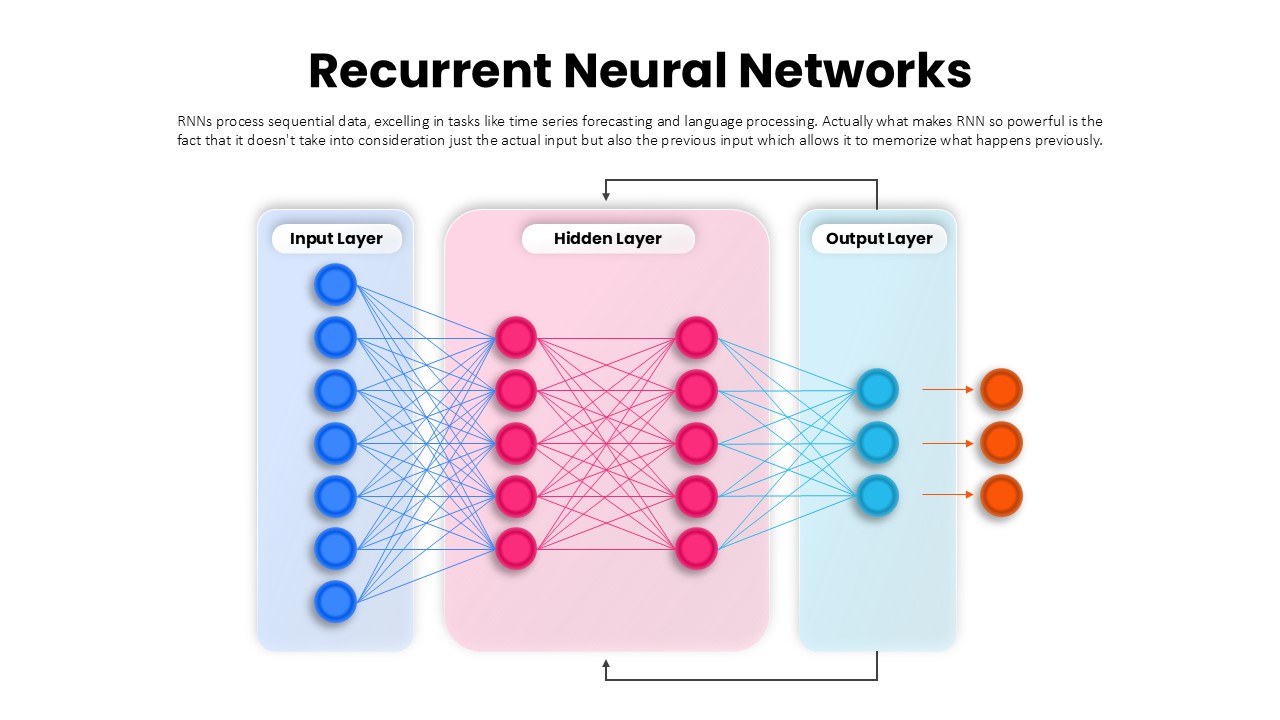recurrent-neural-networks-template-powerpoint-google-slides

Description
Leverage this dynamic Recurrent Neural Network architecture slide to clearly visualize sequential data processing and temporal feedback in a professional, high-impact graphic. The central layout features three distinct columns—Input Layer, Hidden Layer, and Output Layer—each rendered as translucent containers with crisp edges and subtle drop shadows. Within each container, colored circular nodes represent data points, with blue nodes in the input stage, pink nodes in the hidden stage, and turquoise nodes in the output stage. Interconnected lines illustrate feedforward connections, while looping arrows at the top and bottom highlight the recurrent feedback that allows the network to retain previous information. A descriptive header section provides space for a custom title and summary, enabling you to introduce concepts like stateful processing, memory cells, or sequence-to-sequence modeling.
Built on master slides, this template offers intuitive placeholders for adjusting the number of nodes, resizing layer containers, and swapping icons or labels without manual realignment. Simply drag and drop new shapes to add additional hidden layers, recolor nodes to match brand palettes, or modify arrow paths to represent variant architectures such as LSTM or GRU. The minimalist white background and consistent typography ensure maximum readability and seamless integration into any corporate or academic presentation. Master slide support guarantees pixel-perfect rendering in both PowerPoint and Google Slides, eliminating formatting issues and reducing prep time.
Ideal for AI workshops, technical briefings, and data science training, this diagram empowers presenters to explain complex neural topologies with confidence. Use it to showcase time series forecasting pipelines, natural language processing workflows, or dynamic sequence modeling in research proposals and team meetings. You can also repurpose the design for feedforward neural networks, convolutional architectures, or transformer models by renaming layers and adjusting connector styles. Accelerate your content creation process and engage your audience with a polished, interactive visualization that underscores the iterative nature of recurrent networks.
Who is it for
AI architects, data scientists, machine learning engineers, and technical trainers will benefit from this slide when explaining RNN workflows, demonstrating sequence modeling, or teaching neural network concepts.
Other Uses
Repurpose this layout for feedforward network diagrams, convolutional layer visualizations, transformer architecture overviews, or any multi-layer topology by editing layer labels, node counts, and connector styles.
Login to download this file

















































